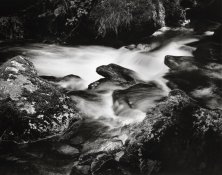FilmOnly
Member
I will be taking a brief trip to NYC, and I want to be prepared. I have used Kodak CN 400, Tri-X, and Ilford Delta 400. Each of these seems to have its own set of characteristics, though there are some similarities. I like the sharpness of CN 400, but the gray tones of the traditional b&w films. Overall, I tend to like a shaprer film that will provide good shadow detail.
The main issue for me, however, has been the sky. I have yet to find a b&w film that does not white out the sky. I loathe whited-out skies, and I purposely avoid shooting into the sun or other situations that make for white skies. I am currently trying Rollei Superpan 200, as that was recommended as a good alternative (here on APUG). I have not gotten back any results with this film, and so I do not know yet if the skies will be white.
Anyway, what would be a good choice for 400-speed? I am against using any of the darker yellow filters, as they tend to darken (and change) things too much. I am trying a light yellow filter (a number 6, I believe). I have seen a little improvement. Is b&w a medium that simply fails to reproduce sky tones very well? I welcome any comments. With regard to my trip, I will be doing mostly street shooting in Manhattan.
The main issue for me, however, has been the sky. I have yet to find a b&w film that does not white out the sky. I loathe whited-out skies, and I purposely avoid shooting into the sun or other situations that make for white skies. I am currently trying Rollei Superpan 200, as that was recommended as a good alternative (here on APUG). I have not gotten back any results with this film, and so I do not know yet if the skies will be white.
Anyway, what would be a good choice for 400-speed? I am against using any of the darker yellow filters, as they tend to darken (and change) things too much. I am trying a light yellow filter (a number 6, I believe). I have seen a little improvement. Is b&w a medium that simply fails to reproduce sky tones very well? I welcome any comments. With regard to my trip, I will be doing mostly street shooting in Manhattan.

















